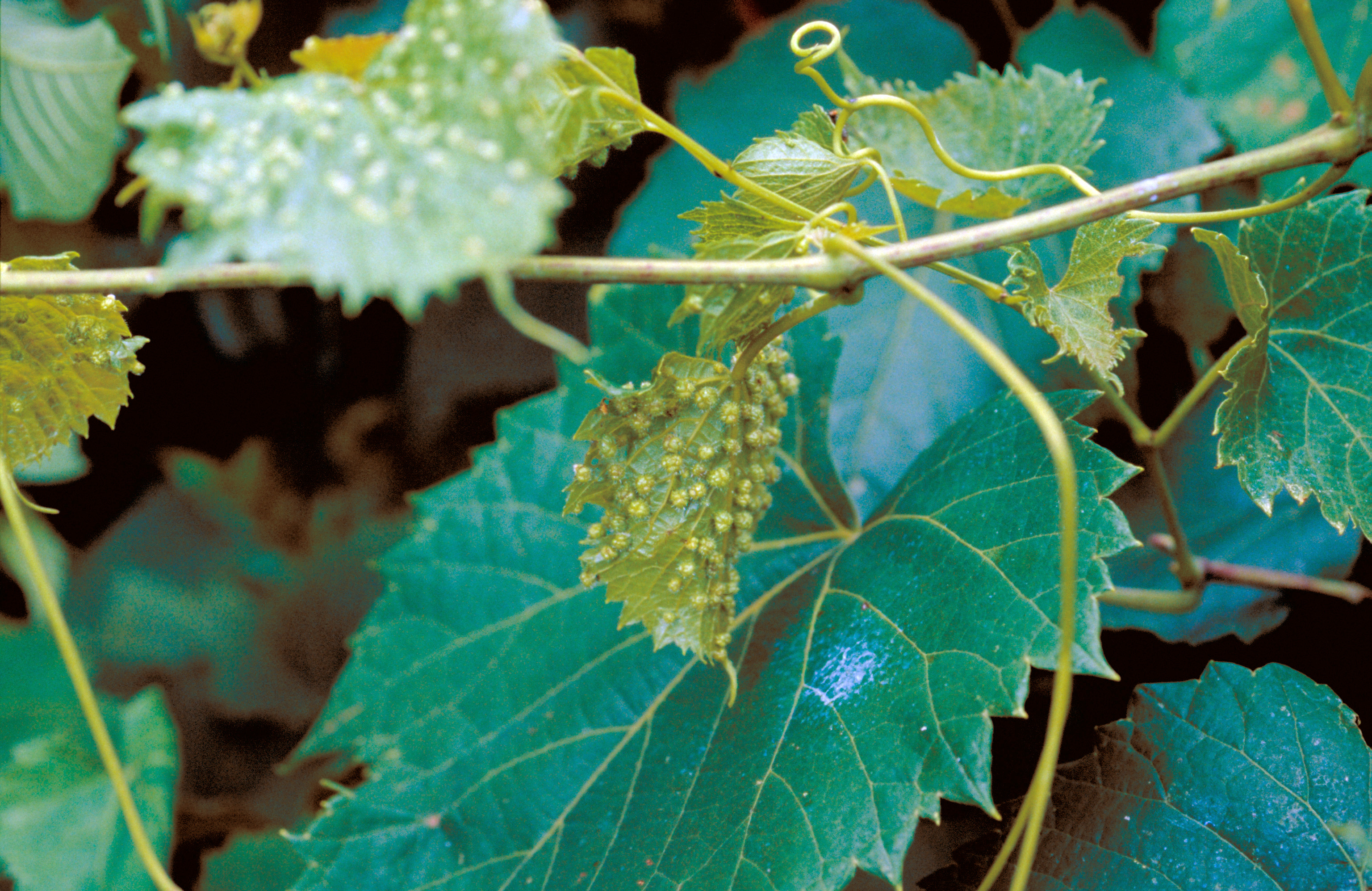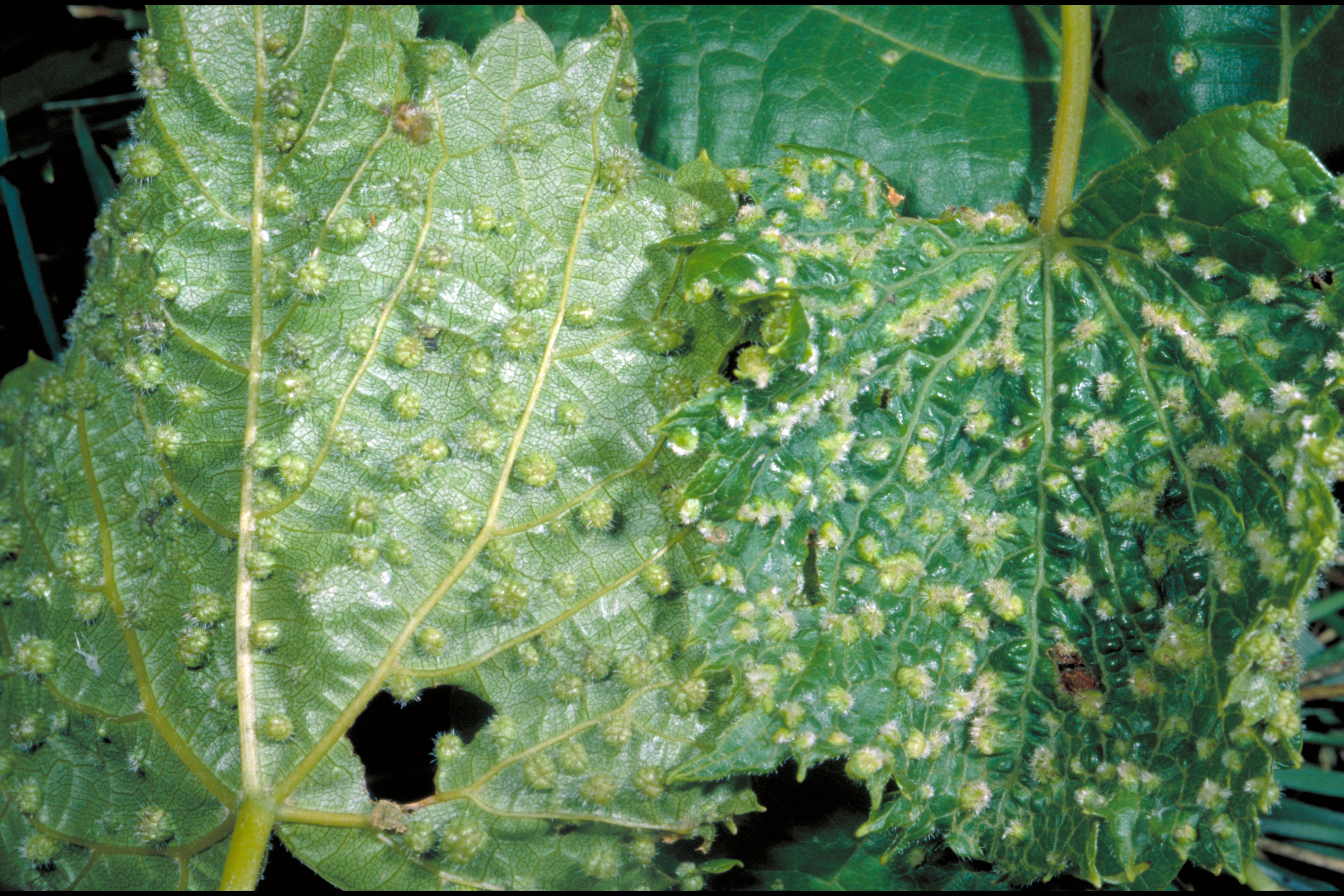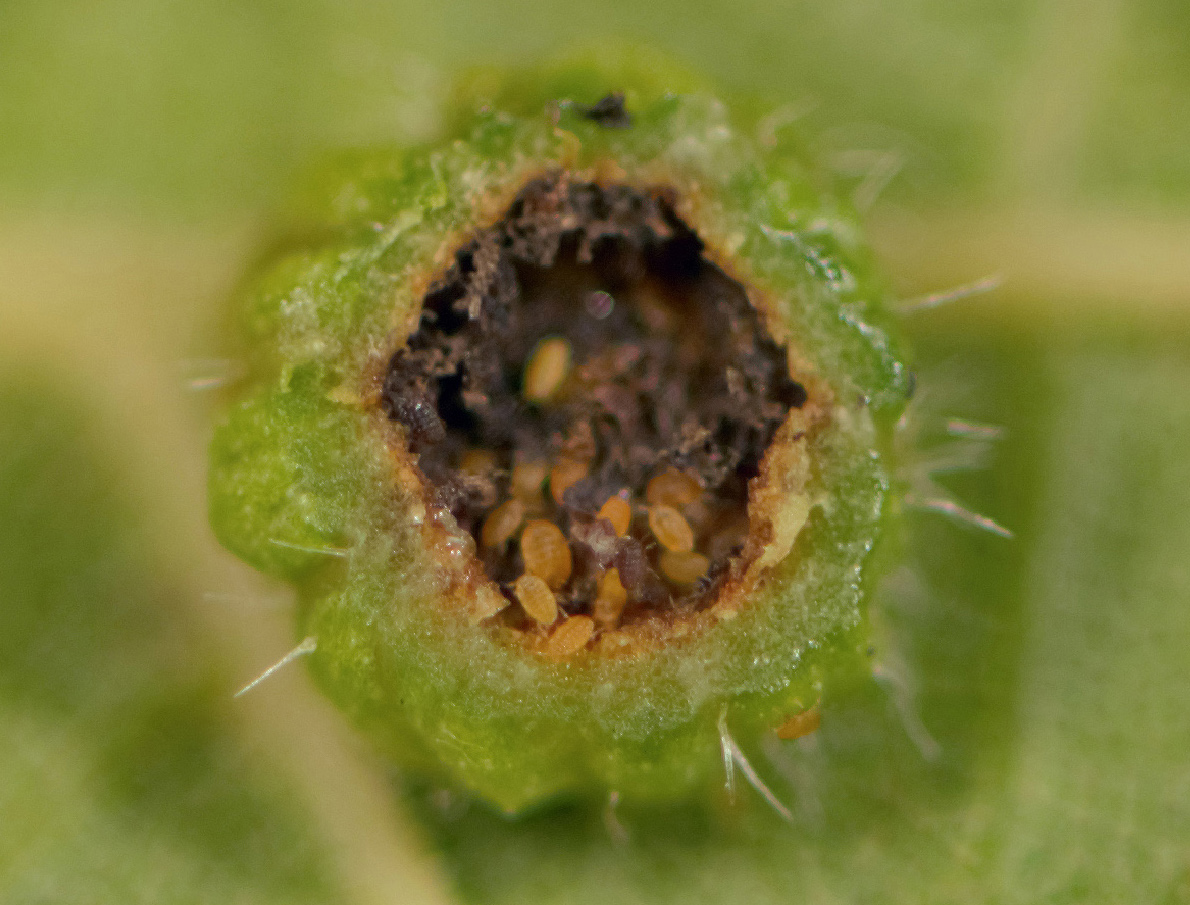Grape Phylloxera on Grapes
Return to Insect Pests
Grape phylloxera (Daktulosphaira vitifoliae) is a tiny aphid-like insect with piercing-sucking mouthparts. Damage can be identified by the characteristic galls produced on leaves and roots. Leaf galls are unsightly and result in minimal damage. Severe galling can suppress photosynthesis up to 50% and can cause defoliation and reduce shoot growth. However, the presence of leaf galls can be a sign of root infestations, which can be difficult to control and can lead to vine decline. Each mature gall may release dozens of phylloxera. Hosts include cultivated and wild grapes. There are several overlapping generations per year.

Phyloxera leaf galls.
(Photo: Ric Bessin, University of Kentucky)

Close-up of phylloxera galls.
(Photo: Ric Bessin, University of Kentucky)

Mature leaf gall containing phylloxera insects.
(Photo: Ric Bessin, University of Kentucky)
Management:
- Utilize resistant rootstocks.
- In small plantings, remove galled leaves by hand early in the year.
- Apply foliar insecticides.
